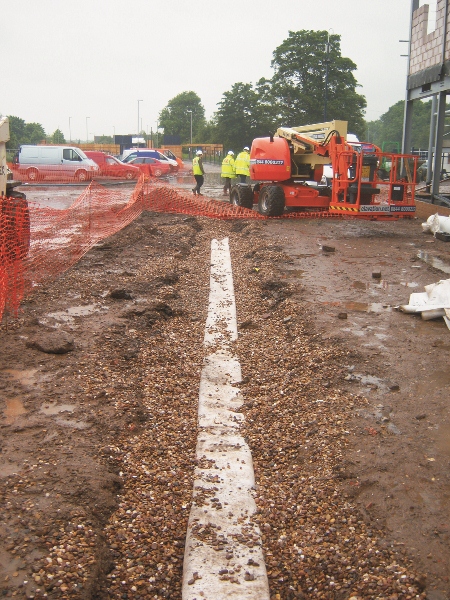- Delivering SuDS
- Using SuDS
- Background
- SuDS principles
- Benefits of SuDS
- Benefits of SuDS
- Why developers should choose SuDS
- Flood risk management
- Water quality management
- Biodiversity & ecology
- Amenity
- Air quality
- Building temperature
- Carbon reduction and sequestration
- Crime
- Economic growth
- Enabling development
- Flexible infrastructure/climate change adaptation
- Education
- Groundwater recharge
- Health and well being
- Pumping wastewater
- Rainwater harvesting
- Recreation
- Tourism
- Traffic calming
- Treating wastewater
- SuDS components
- SuDS components overview
- Source control
- Swales & conveyance channels
- Filtration
- Infiltration
- Retention & detention
- Wetlands
- Inlets, outlets and control structures
- SuDS performance & monitoring
- Delivery
- The costs & benefits of SuDS
- Adoption & maintenance of SuDS
- Legislation & regulation
- Design guidance
- Retrofitting SuDS
- Drainage exceedance
Component: Soakaways
Description
Soakaways are square or circular excavations either filled with rubble or lined with brickwork, pre-cast concrete or polyethylene rings/perforated storage structures surrounded by granular backfill. They can be grouped and linked together to drain large areas including highways. The supporting structure and backfill can be substituted by modular or geocellular units.
Soakaways provide stormwater attenuation, stormwater treatment and groundwater recharge.
Advantages & disadvantages
|
Advantages |
Disadvantages |
|
|

Where component can be used
Residential: Yes
Commercial/industrial: Yes
High density: Yes
Retrofit: Yes
Contaminated sites: No
Sites above vulnerable groundwater: No
Performance
Peak flow reduction: Good
Volume reduction: Good
Water quality treatment: Good
Amenity potential: Poor
Ecology potential: Poor
Quantity
Infiltration techniques:
-
provide storage for runoff in an underground chamber, lined with a porous membrane and filled with coarse crushed rock.
-
enhance the natural ability of the soil to drain the water. They do this by providing a large surface area in contact with the surrounding soil, through which the water can pass.
The amount of water that can be disposed of by a soakaway within a specified time depends mainly on the infiltration potential of the surrounding soil. The size of the device and the bulk density of any fill material will govern storage capacity.
Quality
Runoff is treated in different ways by a soakaway. These include:
-
physical filtration to remove solids
-
adsorption onto the material
-
biochemical reactions involving micro-organisms growing on the fill or in the soil.
The level of treatment depends on the size of the media and the length of the flow path through the system, which controls the time it takes the runoff to pass into the surrounding soil. Pre-treatment may be required before polluted runoff is allowed into a soakaway.
Amenity
Soakaways are easy to integrate into a site, but they offer very little in the way of amenity or biodiversity value as they should be completely underground and water should not appear on the surface.
They do, however, increase soil moisture content and help to recharge groundwater, thereby helping to mitigate problems of low river flows.
Maintenance
-
Removal of sediments/debris from pre-treatment device
-
Monitoring performance (using observation well).
Read more on:



